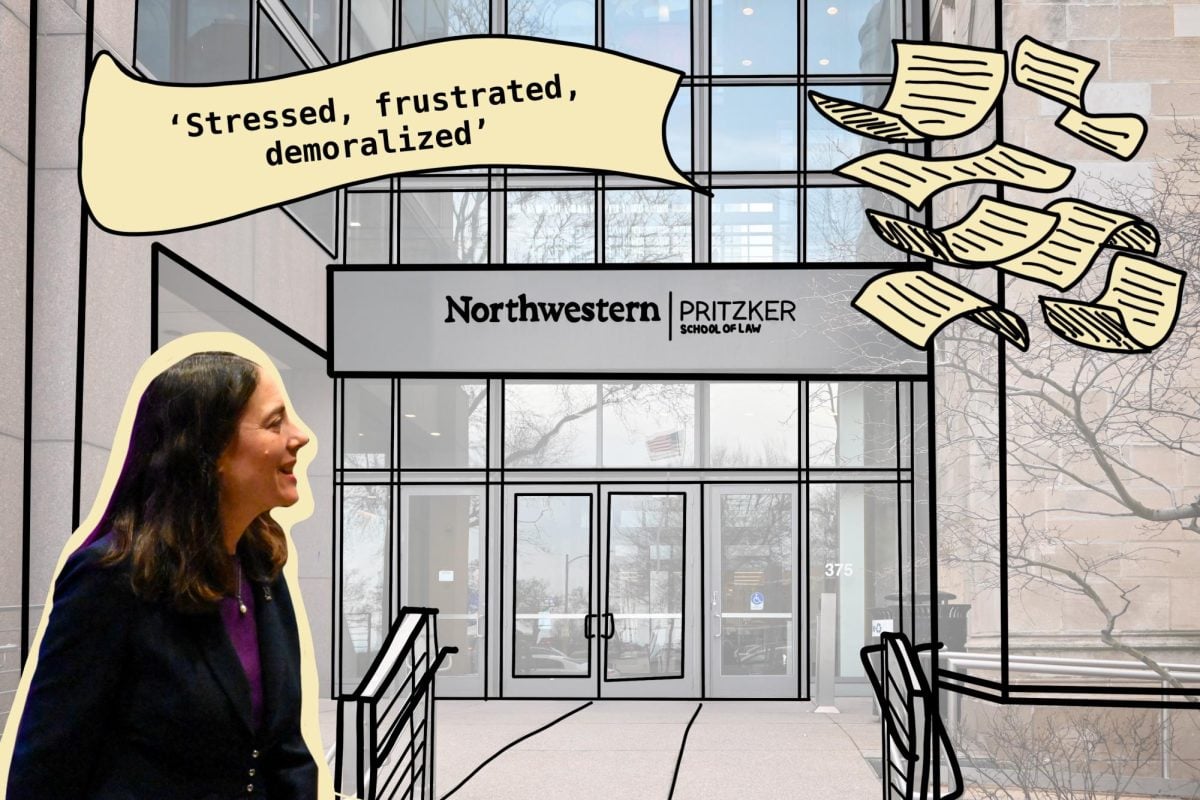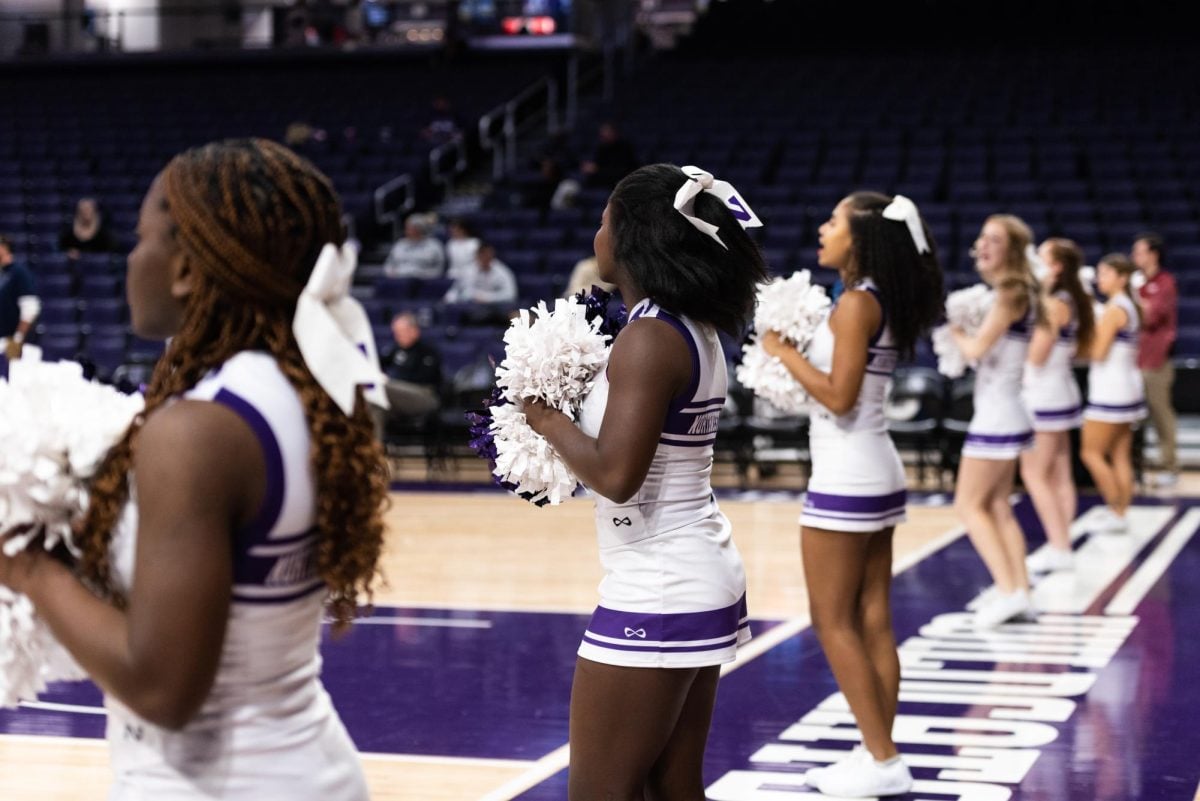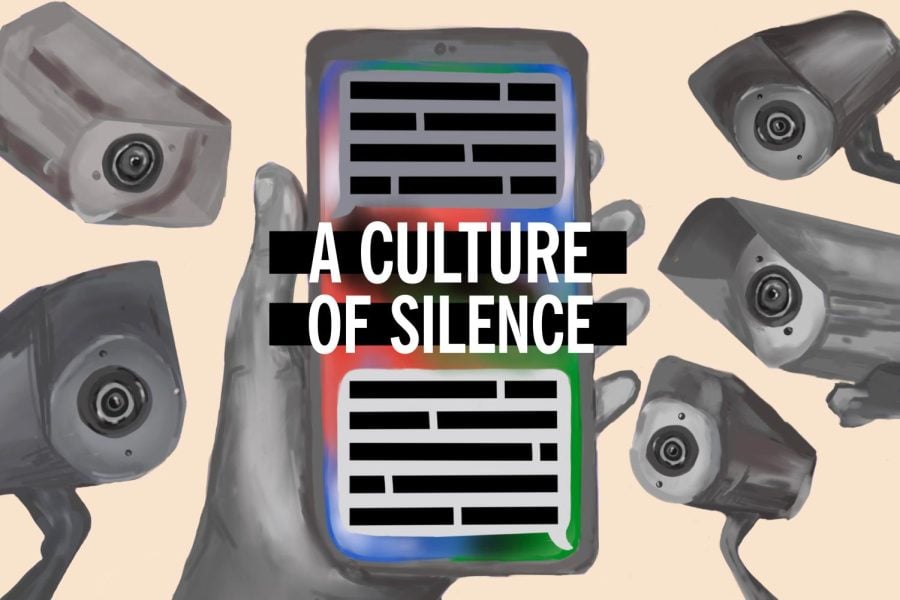If you think Northwestern is nickel-and-diming you, look at the quarters.
The next University Strategic Plan is nearing completion, and if University President Morton Schapiro has his way, it will recommend an update to the quarter system to maximize student learning outside the classroom.
As members of the NU community discuss the University’s greatest assets and needs this fall, Schapiro is outlining what he hopes will be the hallmarks of his tenure at here. The former Williams College president, also an economics professor, has spent much of his career working with undergraduates. He’s suggested that NU students could benefit from more opportunities for hands-on learning.
“That’s going to be featured pretty prominently in the Strategic Plan,” he said in an interview with The Daily last month. “That could have major curricular implications.”
Though Schapiro and others in the NU administration have not outlined what these changes might look like, they’ve hinted the push might ideally take the shape of a lessened course requirement – maybe three classes per quarter instead of four – which would make room in students’ schedules for a free quarter or a new kind of course: one rooted in experiential learning, where students work on research, independent projects or issues in the broader community.
NU schools already have several experiential programs, both optional and required, like Chicago Field Studies in the Weinberg College of Arts and Sciences, the Junior Year Practicum in the School of Education and Social Policy and the Journalism Residency program in the Medill School of Journalism. All offer some form of academic credit.
But do NU students, many of whom take full advantage of the opportunity to take 20 percent or more classes than many of their peers at semester schools, want more of these opportunities? Would a mandatory or even highly encouraged expansion of experiential learning work at NU?
It might for some students. But the quarter system will limit the success and scope of such a program.
What’s in a quarter?
It’s sold on the admissions website and in the course catalog primarily as a means to take more classes. But the four-course per quarter norm and the intensity of the schedule, as well as its benefits, surprised Schapiro – who has previously only worked at schools with semester systems – when he arrived on campus, he told The Daily.
All undergraduates at NU must complete at least 45 credits to graduate. That’s more than many other schools on the quarter system, including the University of Chicago and Dartmouth College, and it allows students to drop to a three-course quarter just three times throughout their undergraduate experience if they enter NU without other credits.
Those requirements may not leave room in many students’ schedules for a more time-consuming, Evanston- or Chicago-based class.
Plenty of schools known for their experiential learning programs such as Oberlin and Hampshire colleges don’t use the quarter system. These schools instead use a modified semester system with a significantly shorter term in the winter designed for more inventive or experiential courses.
In 1966, when a Student Planning Commission proposed a switch to semesters, this was the modified system they suggested NU adopt, according to The Daily archives.
Oberlin and Hampshire both emphasize a flexible curriculum, interdisciplinary courses and independent study.
Many other schools on the quarter system explicitly encourage students to take advantage of the system to expand their studies outside of the classroom.
Dartmouth calls its system “The Dartmouth Plan,” which requires students to enroll for 12 quarters but offers and encourages undergrads to take the opportunity to study abroad as well as consider “leave terms,” according to the Dartmouth website, during which students may, without credit, “go on vacation, get an internship, find a job, do research, or travel.”
Undergrads at Dartmouth must be on campus during summer of their sophomore year, opening up at least one fall, winter or spring quarter during a student’s four years to take a leave term.
NU’s surplus requirements have led some of the Strategic Plan workgroups to consider more flexibility in NU’s curriculum, with an emphasis on hands-on, out-of-the-classroom learning, Schapiro said.
He said “everybody” at a recent meeting agreed that while traditional classroom teaching is the “lifeblood” of an undergraduate education, NU could better leverage the quarter system to expand its curriculum. That might include lab work, internships or other, less traditional credit-earning courses, he said.
‘Love/hate relationship’
The quarter system in its current form does have one distinct advantage: flexibility.
NU’s academic calendar helps enable students like Communication senior Andrew Glor to double major.
Throw in a minor in the Harvey Kapnick Business Institutions Program, too.
“It provides more opportunities to take different classes,” Glor said. “You have a love/hate relationship with it. I’m sure everyone does.”
Having entered NU with five Advanced Placement credits, Glor’s been able to take just three classes some quarters and will spend Winter Quarter in Los Angeles doing an internship as well as earning a credit in the School of Communication. Using AP credits to enable this kind of academic flexibility is comMonday, University Provost Daniel Linzer said, and most students could get by with taking three courses a quarter.
A student body as diverse as NU’s doesn’t necessarily invite comparisons. There are many students like Glor who take advantage of AP credits to do internships or participate in off-campus programs.
Then there are students like Meixi Ng, who’s fulfilled most of the requirements for three majors (though she won’t finish all of them), as well as completed a Civic Engagement Certificate and studied two languages during her time at NU. She’s taken, on average, five or six courses a quarter.
“I’ve learned to see Chicago as my classroom and also as my playground,” the SESP senior said.
Ng is the type of student – one eagerly seeking plenty of courses but who does so for the sake of learning – that might capitalize on a program with more experiential learning built into every quarter.
Experiential from the start
NU’s academic structure, in fact, has its roots in experiential learning. The University weighed the benefits and drawbacks when the undergraduate schools switched to quarters in the ’40s, but ultimately, it did not have much of a choice between semesters and quarters.
The founding of the Technological Institute, now the McCormick School of Engineering and Applied Science, was made possible by Walter P. Murphy, a generous benefactor who required the engineering program run on quarters for at least 10 years to enable a cooperative education program where students could alternate quarters of studying with a quarter of work, according to documents in the University Archives.
The Institute, dedicated in 1942, adopted the quarter system. To avoid scheduling headaches, the rest of NU came along for the ride.
Since then it’s been challenged periodically, said Prof. Mary Kinzie, director of the Creative Writing Program.
When an opportunity came along about 15 years ago to try out semesters in certain courses, Kinzie said she “leaped in immediately.” The program now requires juniors to take a year-long course sequence, divided into semesters, culminating in a longer work.
“I know students enjoy the quarter system because it allows them to quadruple major with a few minors thrown in,” she said. “But the ‘tasting and trying’ of the menu of courses, although that can be exhilarating in its way, if you’re not lucky … they’re over before you’ve gotten a chance to sink your teeth into
it.”
Ng, the SESP senior, compared NU’s extensive course catalog to a menu as well. It’s why she took so many classes at NU, she said.
“There are fun classes, almost like desserts, like photography. You have a lot more flexibility and options,” she said. “I was really excited to be in different classes.”
Essentially every department or program has had to adapt a traditional curriculum to a less-traditional academic calendar.
Dr. Rick Gaber, director of the program in biological sciences, said though the quarter system has its caveats, he would still take it over semesters because it offers flexibility to professors and a much broader range of courses for students.
Still, in what Gaber termed the “infamous” sophomore series all majors in the program must complete, students squeeze in six subjects in a year with two professors per quarter. With about 400 students going through the sequence at the same time, the year is intense, competitive and rushed, Gaber said.
A grant from the Howard Hughes Medical Institute awarded in the spring is allowing the department to transform the series to a nonlinear four-course sequence, effective by fall 2012, he said.
Despite the challenges NU’s programs and departments may face on a quarter system, no one proposed NU write a change to the semester system into the Strategic Plan, Linzer said. Rather, he said NU’s calendar helps the University stand out from the crowd, something those working on the plan only want to increase.
A new curriculum?
The co-op program that spawned the quarter system is still around in McCormick. In the Bienen School of Music, students can design their own internships for possible credit. The Kellogg School of Management emphasizes experiential learning to help its graduate students become more competitive, according to its website.
NU has already started to increase some of these opportunities for undergraduates, intentionally or not: A 20 percent increase in undergraduate summer research grants this spring prompted the University to award a record number to students.
If the Strategic Plan, when completed, does encourage adopting a system with three required courses per quarter and an extra experiential course, it would likely provoke heated discussion across NU and significantly change the undergraduate experience.
Still, the quarter system would shuffle students through this extra course quickly. The class might inhibit students from taking on an extra major or minor, or six classes in a quarter, because of the increased time it would require.
If NU lowered the requirement to three courses per quarter to facilitate a “free” quarter for students to engage in experiential learning programs, the change might be more effective.
Though NU has no plans to switch to a semester system, the quarter system will always impose tight deadlines, conflicting commitments and a stressful atmosphere upon students, faculty and staff. It will benefit some programs at the cost of others and privilege students who want to take as many courses as possible over those who want more in-depth learning.
The former are the students NU has been attracting and continues to attract, and perhaps there’s nothing wrong with that. Oberlins and Hampshires are available to students who want them.
And for the foreseeable future, NU students will keep their course buffet, for better or worse.
To be the first to know what’s happening on campus and in Evanston, sign up to receive Daily Northwestern breaking news alerts here.







